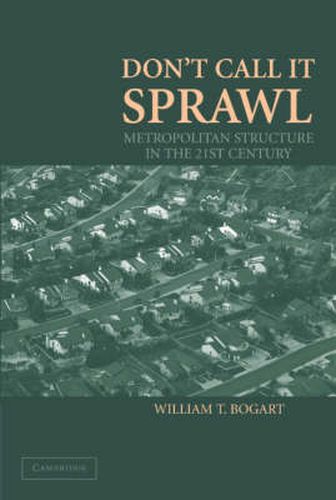Readings Newsletter
Become a Readings Member to make your shopping experience even easier.
Sign in or sign up for free!
You’re not far away from qualifying for FREE standard shipping within Australia
You’ve qualified for FREE standard shipping within Australia
The cart is loading…






In Don’t Call It Sprawl, the current policy debate over urban sprawl is put into a broader analytical and historical context. The book informs people about the causes and implications of the changing metropolitan structure rather than trying to persuade them to adopt a panacea to all perceived problems. Bogart explains modern economic ideas about the structure of metropolitan areas to people interested in understanding and influencing the pattern of growth in their city. Much of the debate about sprawl has been driven by a fundamental lack of understanding of the structure, functioning, and evolution of modern metropolitan areas. The book analyzes ways in which suburbs and cities (trading places) trade goods and services with each other. This approach helps us better understand commuting decisions, housing location, business location, and the impact of public policy in such areas as downtown redevelopment and public school reform.
$9.00 standard shipping within Australia
FREE standard shipping within Australia for orders over $100.00
Express & International shipping calculated at checkout
In Don’t Call It Sprawl, the current policy debate over urban sprawl is put into a broader analytical and historical context. The book informs people about the causes and implications of the changing metropolitan structure rather than trying to persuade them to adopt a panacea to all perceived problems. Bogart explains modern economic ideas about the structure of metropolitan areas to people interested in understanding and influencing the pattern of growth in their city. Much of the debate about sprawl has been driven by a fundamental lack of understanding of the structure, functioning, and evolution of modern metropolitan areas. The book analyzes ways in which suburbs and cities (trading places) trade goods and services with each other. This approach helps us better understand commuting decisions, housing location, business location, and the impact of public policy in such areas as downtown redevelopment and public school reform.